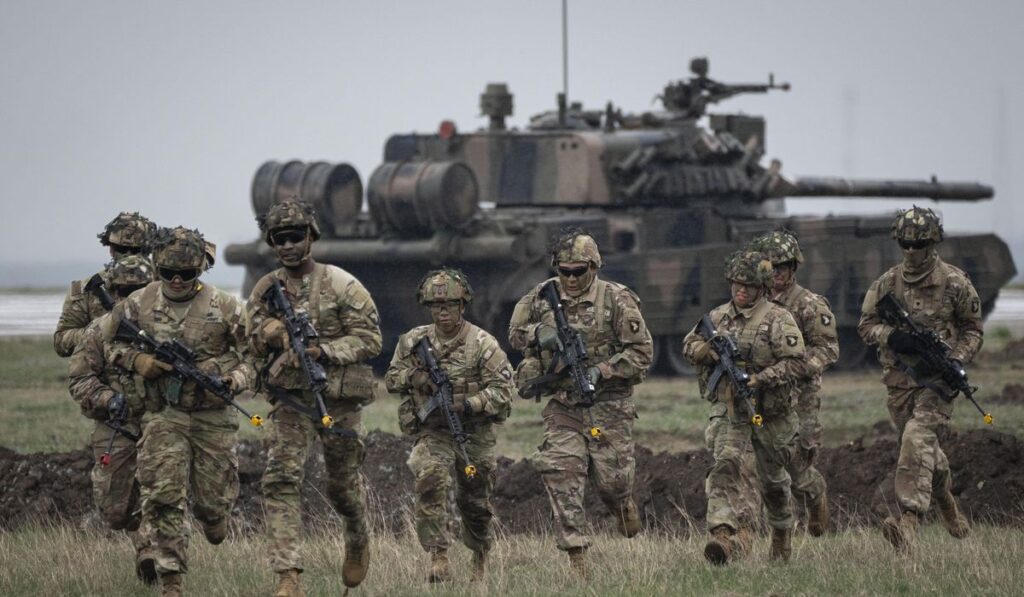Washington intends to trim the number of U.S. troops stationed on NATO’s eastern flank in Europe, a move Romanian officials say reflects the Trump administration’s reassessment of deployments and priorities. The decision shifts the conversation from permanent presence to smarter posture, balancing deterrence with deterrence that is sustainable and targeted. This article unpacks what the change means for allies, for military readiness, and for the politics of burden sharing.
The announcement signals a strategic rethink, not a retreat, from a conservative perspective that values fiscal responsibility and clear priorities. Reducing troop numbers can free resources for higher-end capabilities the U.S. needs to deter advanced threats, while still keeping options to surge if necessary. The argument from supporters is straightforward: posture should match threats and resources, and allies must shoulder more of the cost of collective defense.
Romanian officials framed the move as part of the Trump administration’s reassessment, which highlights a shift toward flexible presence and rotational forces rather than permanently stationed brigades. That kind of posture can be more disruptive to an adversary’s planning because it forces them to track forces across multiple locations. At the same time, practitioners insist on preserving rapid-response units and prepositioned equipment so deterrence doesn’t weaken.
Critics worry that any reduction sends the wrong signal to Moscow, but Republicans often counter that signaling comes from capability and will, not simply headcounts. Modern deterrence mixes intelligence, air power, precision fires, and partners who can present layered defenses. The point is to avoid static displays that are expensive and predictable while building a posture that is agile and costly for an adversary to defeat.
Operationally, the change favors rotational deployments, more exercises, and increased intelligence-sharing with host nations. Those steps can maintain readiness and interoperability without the political and budgetary baggage of large, permanent garrisons. They also make clear that NATO’s defense is collective, not a unilateral U.S. occupation of frontline states.
From a policy angle, the move reinforces a central Republican theme: demand more from partners while ensuring American forces are modern and lethal. If allies invest more in their militaries and logistics, the alliance gets more capable overall. That’s a straightforward bargain — protection in exchange for a fairer share of the burden and a sharper focus on capability over numbers.
For Romania and other eastern members, the immediate concern is reassurance and the mechanics of how deterrence will be sustained. U.S. planners emphasize prepositioned materiel, joint basing arrangements, and rapid reinforcement schedules as mitigations. Those measures aim to guarantee that, even with fewer boots permanently on the ground, American power can flow quickly to trouble spots.
Politically, the decision plays into domestic debates about military spending and foreign engagement. Republicans typically argue that smarter posture reduces waste and prevents overseas commitments that lack clear national-interest returns. At the same time, they insist that where U.S. presence truly matters, it will be maintained decisively and with the resources needed to prevail.
The diplomatic angle is equally important: the move should prompt allies to accelerate investment in capability and logistics, not to become complacent. NATO cohesion depends on shared responsibility, and allies that invest in robust air defenses, armored forces, and sustainment infrastructure improve deterrence for everyone. The goal is a stronger, more capable NATO that does not rely on perpetual American garrisons to do the heavy lifting.
Operational planners will watch for signs that deterrence holds and that surge options remain credible, while politicians will watch for whether allies step up financially and militarily. If this reassessment drives NATO partners to build real capabilities, the result could be a leaner, more potent collective defense. Whatever happens next, the emphasis from Washington will be on effectiveness, accountability, and preserving the ability to respond quickly if deterrence fails.



